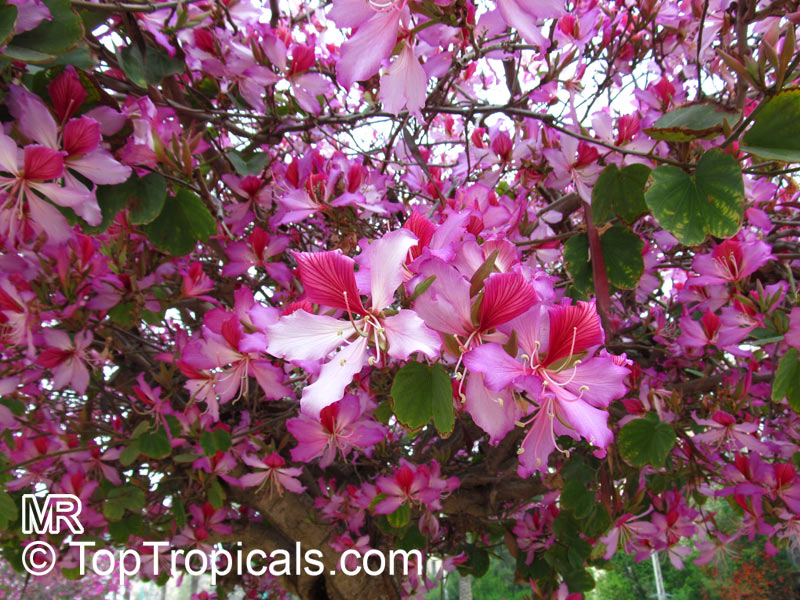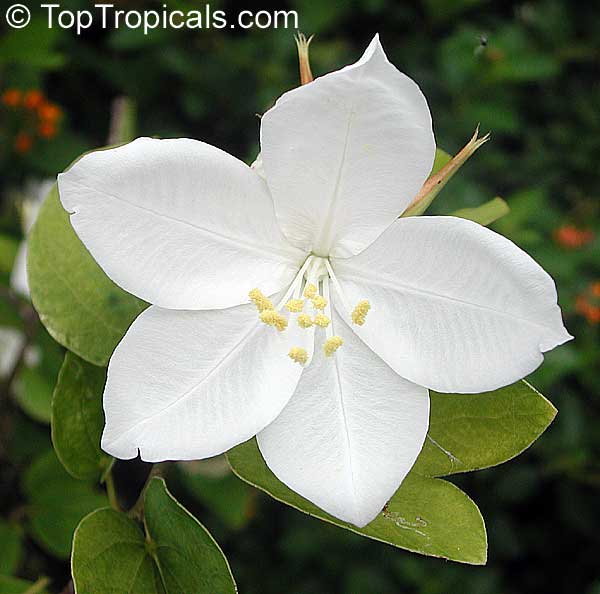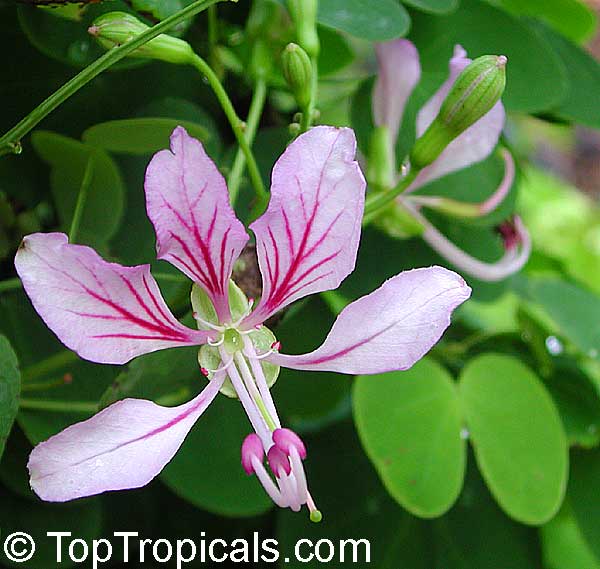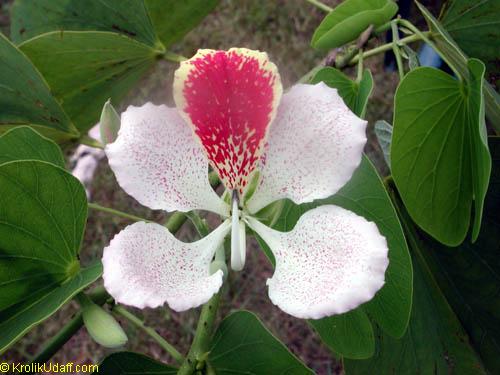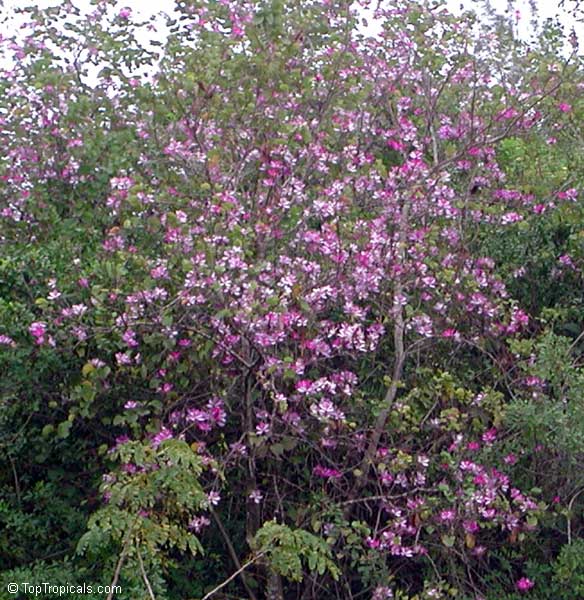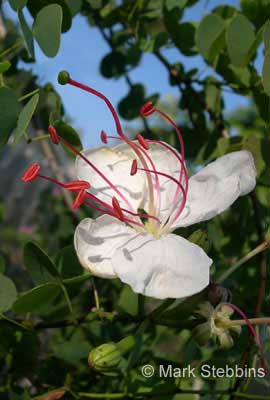Bauhinias - Orchid Trees
Scientific name: Bauhinia sp.
Family: Faboideae / Leguminosae / Papilionaceae
Common names: Orchid Tree, Kachnar (Hindi).
Origin: India
"...Edging the golf course of the club was a glorious sweep of glowing purple. Even before I was near enough to identify the trees, the rich, heady perfume which filled the air told me they were Bauhinias. The sight left me breathless and it was then I realised how difficult was the attempt I was making to describe in mere words the trees I know better how to paint..." ("Flowering trees and shrubs of India")
There are many species of Bauhinia, all indigenous to India, but the commonest are B. variegata, B. purpurea, B. acuminata and B. tomentosa. They all have two points in common. One is the splash of color on one or more of the petals and the other is the united, twin-kidney formation of the leaves.
The name Bauhinia was given as this formation suggested the 16th century herbalists Jan and Caspar Bauhin. The Mountain Ebony is one of the loveliest of Indian trees. It is a medium-sized tree with a dark-brown, smoothish bark. The leaves fall during the cold season and at the same time the large, sweetly-scented flowers appear. Some trees have been noted which retain their leaves on a few of the branches but on such trees the flower sprays are borne only on the leafless branches.
The large flowers grow in short sprays bearing two or three blooms, either from the ends of the branches or from the axils of the leaves. Their curved petals emerge from brown, ribbed calices which split and bend as the pointed bud protrudes. These, as also the buds and stems, are covered with a fine, silver down. Five, long, arched stamens, terminating in large anthers, are surrounded by long, pointed petals, narrowing at the base. Each petal is delicately veined and one or two are smudged at the base with a deeper color. The flowers may be magenta, mauve, pink or white, the former three having crimson markings, the latter a striking yellow splash on one or more of the petals. The long, narrow pods are often as much as 1 foot in length and contain ten to fifteen seeds. These ripen in May and June after the flowering season is over. Young pods, also leaves and buds, are utilised as vegetables.
The leaves are from 3 to 6 inches long and as broad, are cleft at the apex, forming two rounded lobes and grow alternately along the twigs on 1 inch stalks. From the base, the veins spread out fan-wise and the leaf is more or less folded along the centre rib.
The tree yields a useful gum and from the seeds an oil is obtained. The wrappings of biddies are made from the leaves and the bark is used for tanning and dyeing, also as fibres. The timber is good and as many parts of the tree have medicinal uses, it is planted for its value as well as for its extreme beauty.
The Purple Bauhinia or Geranium Tree (B. purpurea) is similar in appearance to the Mountain Ebony but the flowers are mauve, lilac and deep rose or whitish in appearance. The leaves of this tree also fall during the cold season but the flowers do not appear until September and by December the long, greenish-purple pods can be seen, like french beans among the foliage. Later, when the leaves are either withered or fallen, the hanging pods give the tree a drooping, dejected appearance. The flowers are five petalled, clawed or pointed, smaller and narrower than those of the Mountain Ebony and streaked with a brighter color. Sometimes the base of one petal is white. The buds are more winged than ribbed, dark green or brown and downy and, when the flower opens, the calyx splits into two sections, one having two wings and the other three. The underground roots of the Purple Bauhinia have been found to be extremely poisonous.
B. tomentosa from Ceylon, called Sana in Marathi, bears showy, yellow flowers speckled with red. On Dasara Day this tree is worshipped, the leaves are stripped and, after incantations have been repeated over them, they are distributed as tokens for gold.
Other varieties are but small shrubs, still others extensive climbers;
some have tiny, cup-shaped flowers; some bear long, narrow, leaves,
some broad, some short but the flowers are always perfumed and the leaves
always cleft in the characteristic Bauhinia manner.
